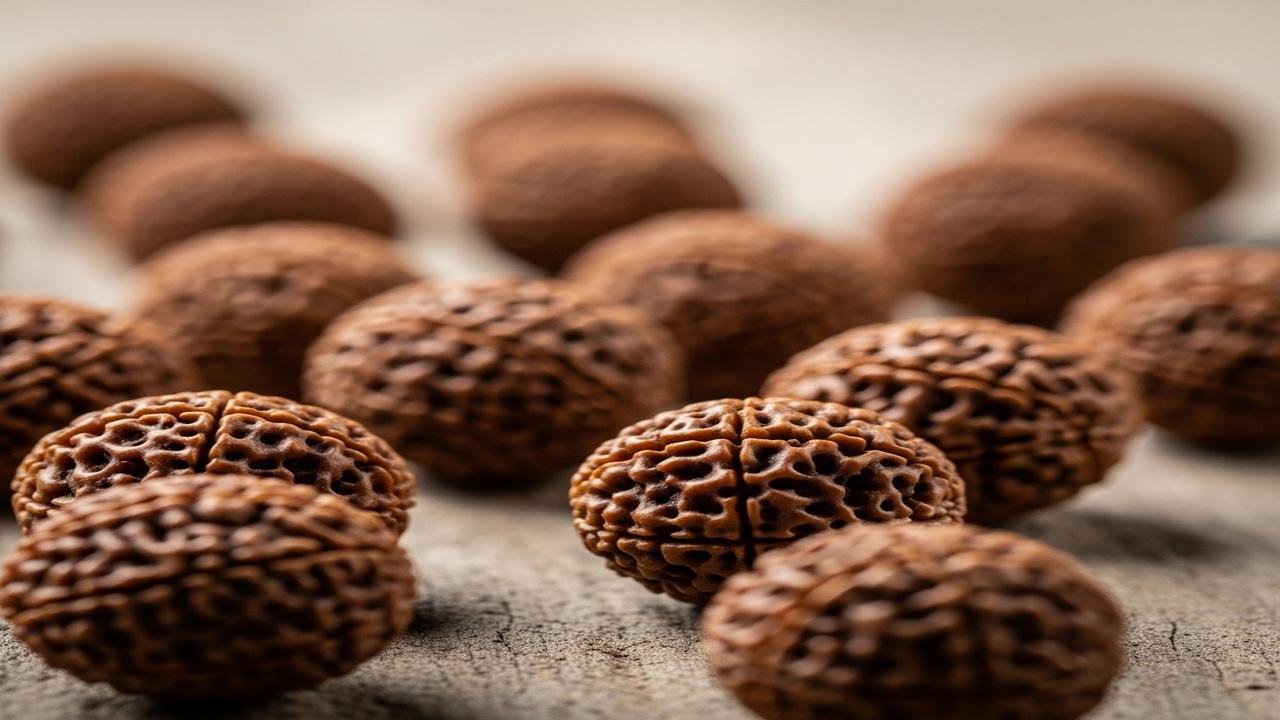The Secret Power Hidden in Rudraksha Beads

On a misty morning near the river, an elderly priest quietly handed me a string of rudraksha beads. Each bead felt cool and ancient, like a small world held between his palms. He smiled and said, “These are not mere seeds; they carry a story.” That simple moment opened a doorway into a spiritual science that has guided seekers for centuries.
The word Rudraksha itself sings of myth and meaning. Tradition says these beads were born from the tears of Lord Shiva—Rudra’s eyes—and so they are wrapped in the energy of compassion, detachment, and inner awakening. For many in India, the beads are a tender reminder of the presence of the Divine in everyday life.
Beyond myth, there is a gentle logic to how rudraksha are used. Worn as malas or bracelets, they touch the skin and accompany the breath. Each bead becomes a tiny reminder to return to the heart, to the steady rhythm of a mantra, and to the quiet center inside us. Yogis and sages have long valued them for helping steady the mind during meditation and prayer.
Rudraksha beads come in different faces or “mukhis,” and each pattern is believed to reflect a distinct quality—protection, clarity, courage, or devotion. While ancient texts mention specific uses, everyday devotees choose beads that resonate with their intentions: a mother seeking patience, a student hoping for focus, or an elder desiring calm. The variety highlights a simple truth: spiritual tools are personal and meant to support life’s many paths.
Traditions around rudraksha are tender and practical. A mala of 108 beads is common, echoing the sacred rhythm of many mantras. Before wearing, devotees often cleanse the beads with water, offer them in a small ritual, and chant a mantra—most commonly Om Namah Shivaya. This act is less about rules and more about setting a heartfelt intention and entering a relationship with the bead.
Care for rudraksha also honors the living nature of the seed. Many people oil the beads lightly, keep them on a clean altar when not worn, and avoid wearing them during baths in the sea or when handling meat—practices rooted in a respectful approach to sacred objects. The goal is to preserve their natural energy and to treat them with devotion.
In today’s busy world, rudraksha finds fresh meaning. For city dwellers facing stress and noise, the beads can become a portable sanctuary. Holding a bead while breathing slowly, or slipping a mala over one’s hands during prayer, creates small pauses of presence. Craftsmen and sellers blend tradition with honesty, reminding buyers to choose authentic seeds from trusted sources and to be wary of plastics that mimic the look but not the spirit.
The cultural story of rudraksha is woven into festivals, pilgrimages, and simple home altars. Sadhus and householders alike carry the same symbol—an emblem of devotion that crosses social lines. This shared reverence keeps ancient wisdom alive, not as rigid doctrine, but as a living practice that adapts to our daily needs.
At its heart, the spiritual science of rudraksha is gentle: a way to bring intention into the body, to anchor prayer in the hands, and to invite quiet transformation. It asks us to move slowly, to listen, and to let a small bead remind us of a larger presence.
Conclusion: Hold a rudraksha with respect, chant with sincerity, and let its simplicity guide your breath. In that quiet connection, you may discover a stillness that brightens ordinary moments into sacred ones.
